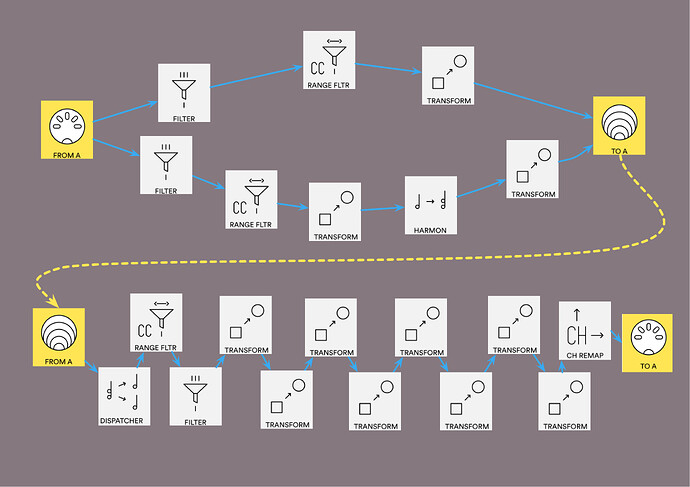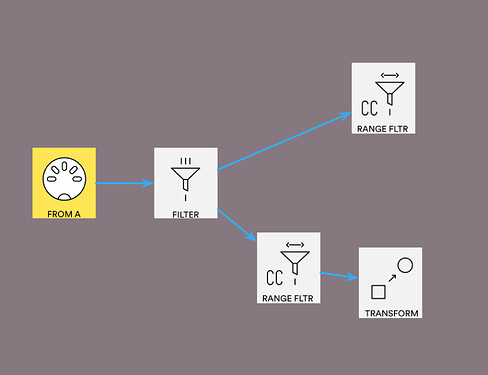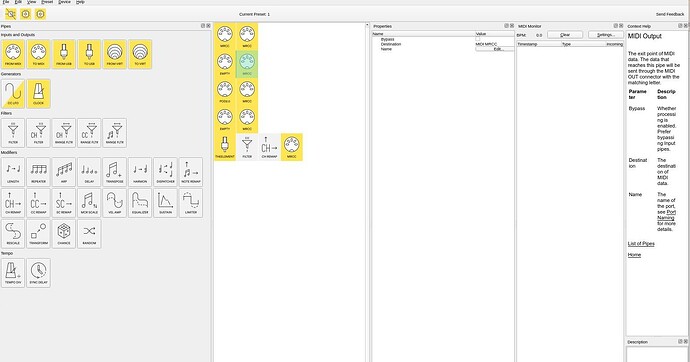I find the editor really opaque to use. If I contrast its design with the layout of the display panel on the Line 6 Helix Rack, the latter is so easy to use, the eye can sweep once from left to right and understand the entire signal flow in one go and this has numerous hardware inputs and outputs plus the potential for multiple complicated signal paths. Using the editor feels like using an old patch bay or modular synth, to understand where a signal is going, you have to follow each wire and see what the socket is labelled and then build up the signal path in your mind each time. Today, I wanted to process each of the 16 channels differently, so this requires me setting up a vertical column of 16 individual filter blocks between in and outs and if I want to start sending them off to other places it’s going to require loads of vertical scrolling and scribbling of notes to keep track of what goes where. And that would be just for input A to output A. To my mind, signals flow from left to right, ‘in’ is on the left, ‘out’ is on the right. It would be great if we could connect stuff with magnetic lines that can be defined like the filters, transformers etc, like Audio Midi Setup on the Mac.
I noticed the word ‘argument’ in the CC transformer section, I’m assuming this is a mathematical or engineering term, I looked it up but couldn’t find anything, I’m only a guitarist so I just fiddled around until it did what I wanted. If it means ‘number’ that would be clearer for dopey guitarists like me.
The editor has a pane called ‘description’ this has remained resolutely blank so far, there’s a lot going on in the editor window, could this area be better used? There are two buttons below that are marked ‘view’ and ‘edit’ that haven’t done anything useful so far.
Could there be key commands for the different presets? Many users might be unaware that they can be assigned in the Mac system prefs.
As I said, I LOVE this gadget, it is going to solve all my MIDI woes but the editor feels like it has been designed by someone with very large side burns and a substantial collection of oscilloscopes at home. I’m not trying to be a dick but the editor could put people off, I reckon.









